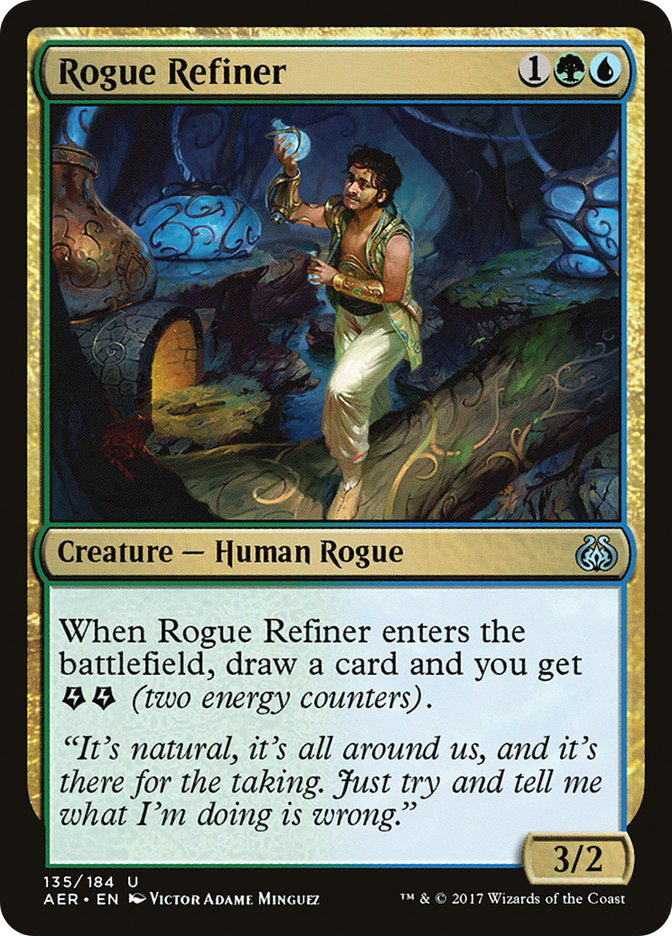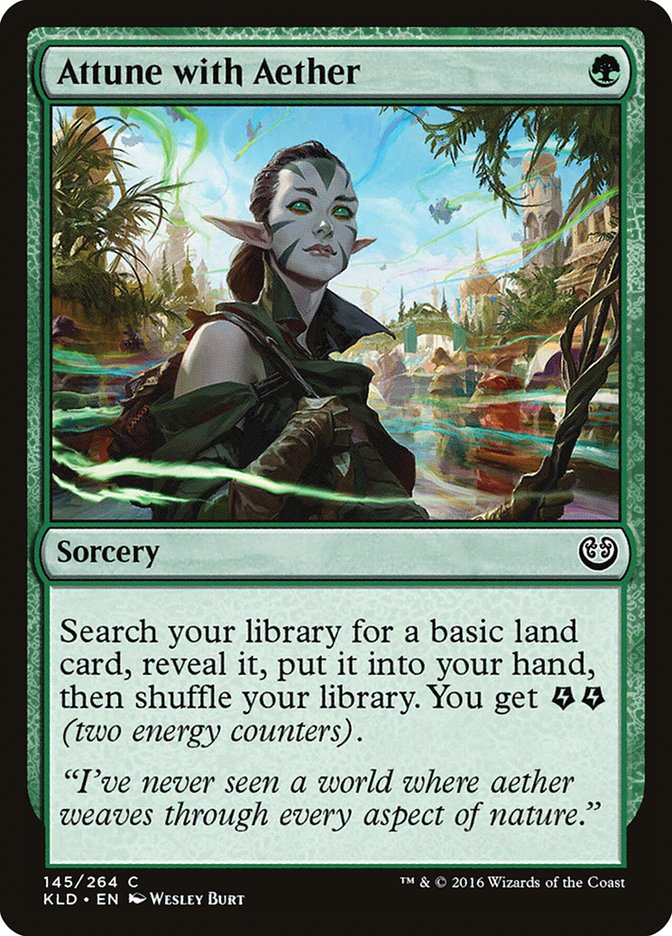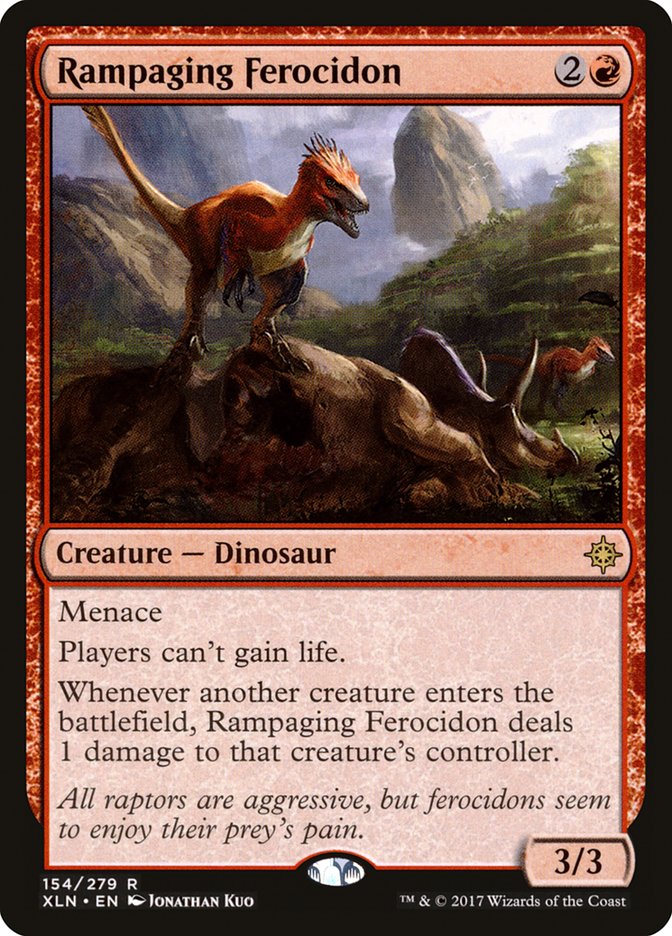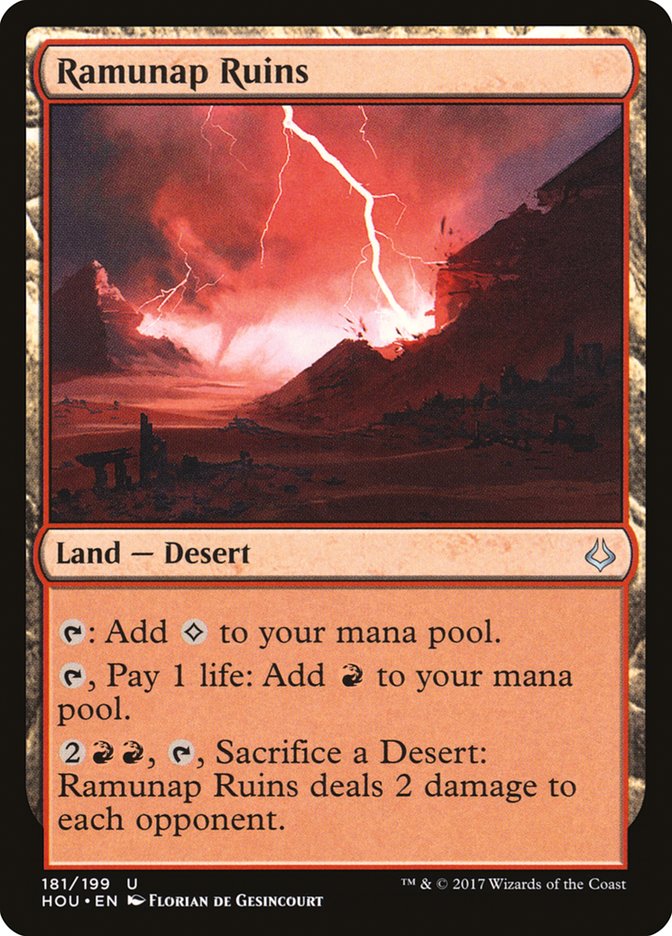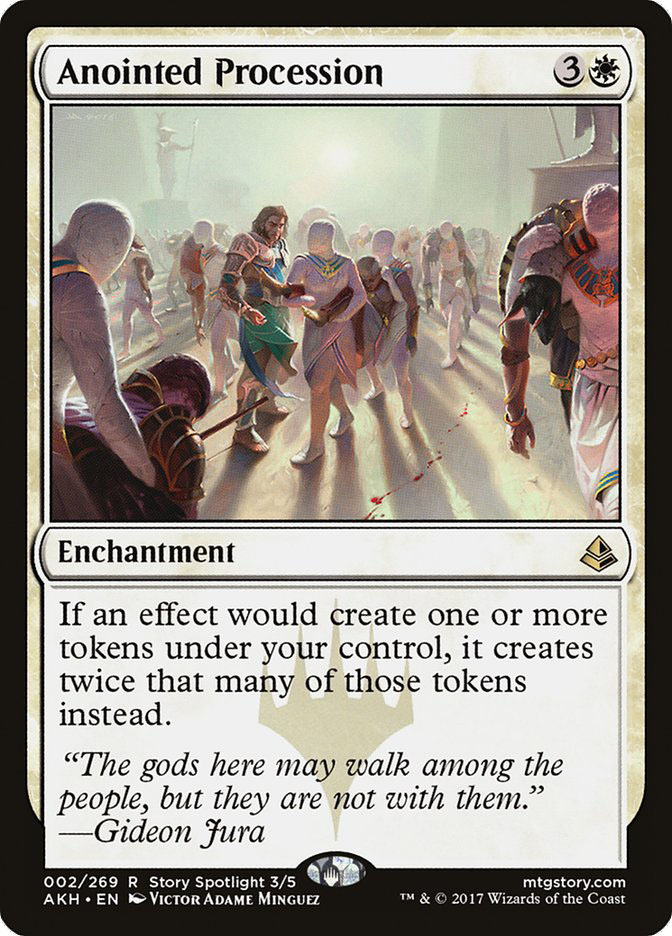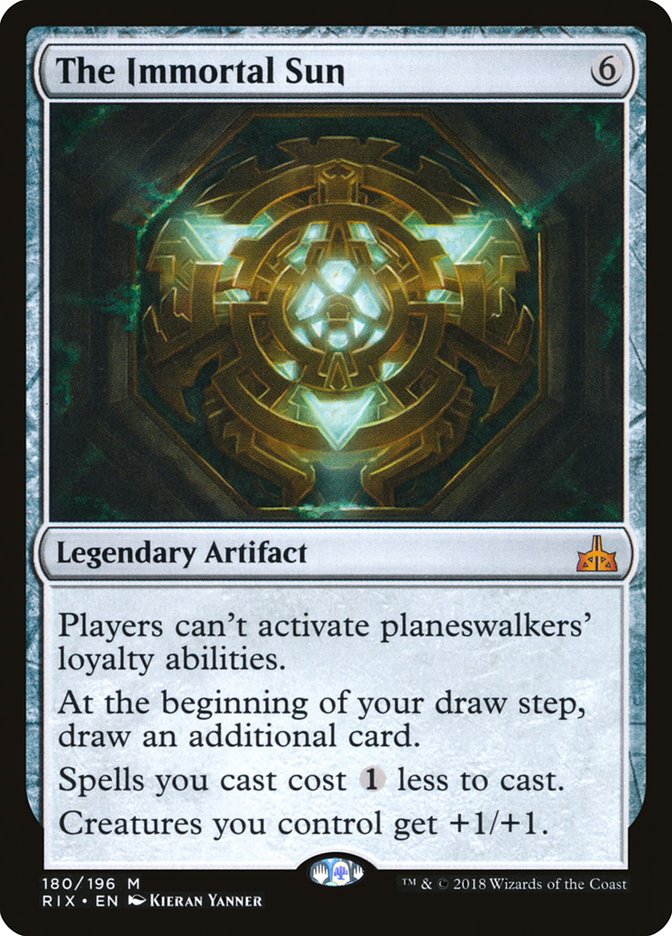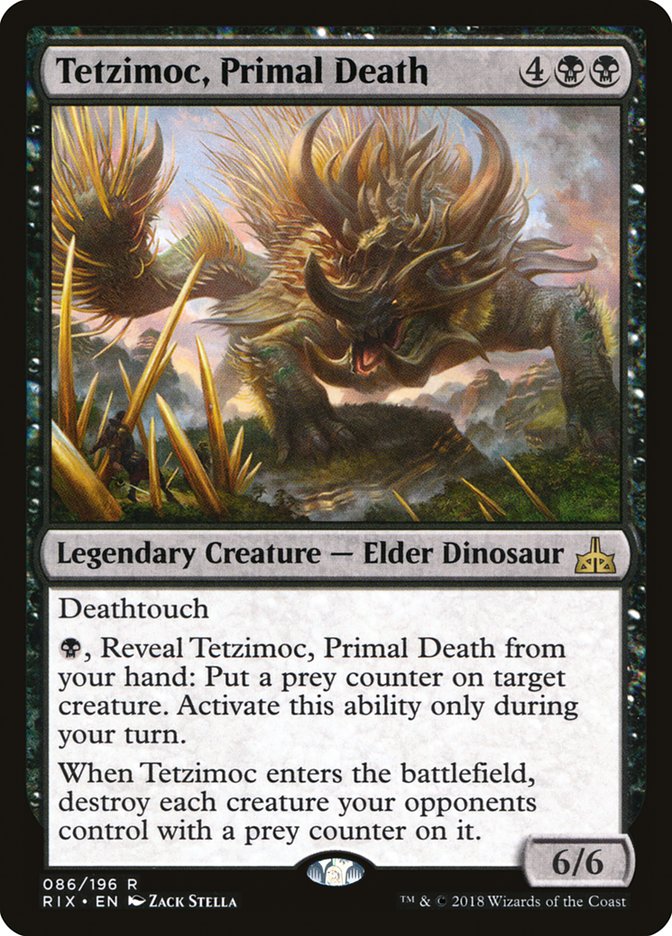I don’t even know where to begin.
Of course I was prepared for a ban on energy cards. It just made too much
sense. Early on it seemed as if energy was merely a symptom of an entirely
different disease, but with each new banning it became abundantly clear
that a misdiagnosis had happened. It wasn’t just Emrakul, the Promised End,
the Felidar Guardian/Saheeli Rai combo, or Aetherworks Marvel that were the
problem. It wasn’t even any specific card at all, but an entire mechanic
that was simply too good in its current form. A mechanic that was the
perfect vessel to take something good and turn it into something great. Or
worse, take something great and make it into something broken.
We now know exactly why the energy mechanic is too good, but it was
difficult to articulate in the early days. On the surface, energy is a
resource that is impossible for the opposition to interact with yet fluidly
does so with other energy cards, but this is only part of what makes the
mechanic so good. The true strength lies in what happens when you attempt
to interact with the cards that produce the resource. A removal spell here,
a block there, and all of a sudden you’ve went card-for-card with an
opponent that has an advantage for no particular reason besides they are
playing with the mechanic.
Magic is all about interaction, which is what makes energy so powerful, and
it’s also why trying to interact with a deck like Temur Energy feels so
bad. Late in a highly interactive game a freshly drawn non-energy card
still reads the same as they would in the early turns, yet energy cards do
not. A Whirler Virtuoso played on turn 3 generally can only produce one
Thopter token, but one drawn on turn 8 can produce five or six. This level
of scalability is historically unheard of, and a mistake Wizards assuredly
wishes they could take back.
The final and potentially most detrimental issue to come from energy was
the fact that practically anything could function as the deck’s top-end.
Aetherworks Marvel into Emrakul, the Promised End / Ulamog, the Ceaseless
Hunger, the Saheeli Rai/Felidar Guardian combo, and then eventually just
Dragons or Gods. After sideboard, fringe cards could easily take over
games-stuff like River’s Rebuke, Confiscation Coup, or dense Vizier of the
Many Faces strategies. The Energy shell was simply too flexible. If there
was a problem, whatever it was, Temur Energy could solve it. This forced
decks like Esper/Abzan Tokens out of the metagame. These decks could beat
Ramunap Red, and even control variants, but just couldn’t beat Longtusk
Cub, Negate, and River’s Rebuke out of Temur Energy’s sideboard. Even
though they would most likely win game 1 against Temur Energy, they would
often lose the match.
The decision to ban exactly Attune with Aether and Rogue Refiner does make
sense. I thought they may attack the mana by removing Attune with Aether
and Aether Hub, or hit the three-drops in Rogue Refiner and Whirler
Virtuoso. The decision they made hits green midrange-based energy decks,
and still lets others exist which I do think would have been better than if
I made the decision. This way, decks that want to play energy spells can
exist like Jeskai Control, or artifact-based energy decks.
Creatures (17)
Lands (24)
Spells (19)

The problem never really was energy on its own, but when it was in the
green-midrange form. Even Jeskai Saheeli wasn’t too good completely on its
own, but only became degenerately powerful when the Four-Color Saheeli
formula was finally cracked.
What blows my mind is that Wizards didn’t stop at Temur Energy, and took a
swing at the format’s second best deck: Ramunap Red. Their reasoning was
mostly due to the deck’s high win percentage on Magic Online. Ramunap Ruins
gave the strategy incredible reach while Rampaging Ferocidon allowed the
deck to get around two strategic ways to fend off red: blocking and gaining
life. I don’t know if I agree with this. Clearly I haven’t had as much time
to think about this as they have, but I’ll do my best to plead my case as
to why I think this was a very narrow-minded decision.
Temur Energy invalidates so many cards, many of which are good against
decks like Ramunap Red. For instance, I’m under the impression that
Ixalan’s Binding is one of the best cards in Standard yet doesn’t see any
play thanks to Bristling Hydra, Glorybringer, and Whirler Virtuoso. You
know, all those energy-based threats. Temur Energy was such a nuisance that
it completely shifted what was playable and what wasn’t. Even if a deck
wanted to play a card like Ixalan’s Binding, it couldn’t set up its deck to
support it thanks to Energy’s stranglehold. Everything was controlled by
the ever-warping Temur Energy, and now the metagame could finally be
relieved from that.
Personally, I’d like to believe that Rampaging Ferocidon got the axe due to
its enter-the-battlefield ability and how it interacts with competitive
rules. The card’s just annoying as every single miss-trigger that benefits
the controller ends in a warning. Obviously it’s the owner’s responsibility
to remember every trigger to take a damage, but Standard is extremely
complex right now, causing small things to be forgotten. We’ve seen
mistakes be made at the highest levels in this format due to how technical
the format’s gotten, and this adds to the problem. Who knows, maybe this
card was just as much of a headache for judges as it was for the players.
Maybe that alone deserves a ban in a format that’s already had so many of
them. You could say it’s a Sunscorched Land policy.
In the end though, I’m not happy about this decision. Maybe Ramunap Ruins
was too good, and just maybe I’m being too hard on the decision about
Rampaging Ferocidon, but that’s Magic. We shouldn’t just be banning cards
because they win the most. They should get taken out of the format when we
know for fact they are detrimental to our enjoyment, and it’s difficult for
me to believe that both Rampunap Red and Temur Energy were both diseases
worth eradicating. I’m under the impression that Ramunap Red was simply a
symptom of the Temur Energy disease. It feels to me that this format has
already experienced much scrutiny over all of the other bans that they
might as well try to salvage as much as they can out of the other cards
that got printed, but that goes against what made me love this game in the
first place. I love finding solutions to problems, not just wishing them
away. I looked forward to a red aggressive deck being enemy number one and
finding the best way to defeat it. I never want the powers above
intervening unless absolutely necessary, and there’s no way this was
absolutely necessary.
Now things are about to change with Attune with Aether and Rogue Refiner
getting banned. Temur Energy – the way we know it – is no more and with it
dies green midrange, a strategy that has dominated Standard for long
enough. Courser of Kruphix, Collected Company, Deathmist Raptor/Den
Protector, Tireless Tracker, and the now gone Rogue Refiner. All that’s
left standing is the impressive Jadelight Ranger, but it doesn’t seem like
the card will have a supporting cast to make a midrange deck compete with
the other powerful cards in the format. This is a good thing, though! Green
midrange has been at the forefront of Standard for so many years that I’m
even sick of playing with these decks. Me, the green midrange master! I’d
love it if green actually becomes the worst color for a while, and I’m
confident that’s going to be the case.
Especially now that Ramunap Red has taken a hit, I feel a shift in power is
about to happen. White no longer has a busted planeswalker to hold
dominance, and green doesn’t have the ability to grind even the most
controlling decks into mulch. We may see blue-based control decks take over
since they are the only decks that seem to have dodged any bannings, but it
will most likely be a more balanced metagame than we’ve seen in some time.
We should start to see interesting cards see play, like Anointed
Procession, The Immortal Sun, and maybe even Dinosaurs like Tetzimoc,
Primal Death.
It’s been a tough year for Standard. There’s been a lot of frustration as
we’ve seen complete debacles like the printing of Felidar Guardian
alongside Saheeli Rai, Emrakul, the Promised End, and now this. I can’t
argue with those of you who have decided to take a step away from Standard
during these times, but I can assure you that this is probably a perfect
time to get back into it. Standard should be very exciting for the
foreseeable future, and Wizards has recently hired some of the best minds
to make sure this never happens again. On top of that, these new employees
should most likely bring exciting changes to the sets that come forth in
the following years.
No matter if you like these changes or hate them, this is still Magic. A
game of strong opinions, in-depth strategies, and constantly shifting
metagames. Of course we normally like change to be more organic, but things
happen. I may not like half of today’s decisions, but that doesn’t mean it
can’t be better for us in the long run.
Hey, at least content’s about to get exciting again! Bring on the brews!


